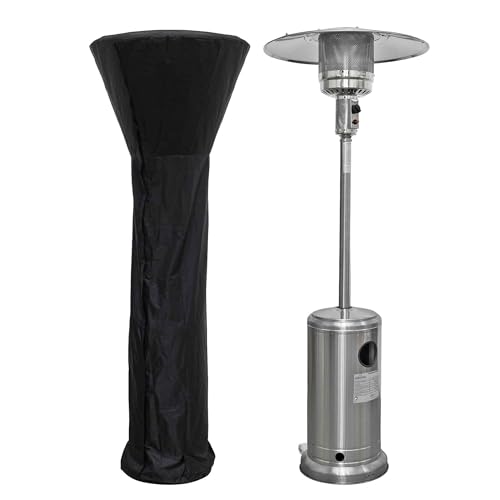The Hidden Secrets Of Garden Heating Solutions
Garden Heating Solutions: Enhancing Outdoor Spaces Year-Round
As seasonal changes bring differing temperatures, garden enthusiasts face the difficulty of preserving their cherished outdoor areas. Whether for cultivating plants, entertaining guests, or merely delighting in the fresh air, garden heating solutions are crucial to making the most of enjoyment and functionality. This short article explores numerous options readily available for heating gardens, consisting of conventional and modern solutions, their benefits, and useful ideas for implementation.
Comprehending the Need for Garden Heating
A properly maintained garden ought to be a year-round sanctuary, providing respite in both summer season and winter. The need for garden heating arises from:
- Frost Protection: Certain plants, especially tender varieties, need protection from frost to endure chillier months.
- Extended Growing Seasons: Heating solutions can enable earlier planting in spring and later on collecting in fall.
- Convenience Optimization: Outdoor events and activities can occur more easily with regulated temperature levels.
Types of Garden Heating Solutions
Garden heating solutions can be divided into a number of categories based on their innovation and fuel source. Here's a comprehensive take a look at some popular options:
1. Electric Heaters
Electric heaters are a flexible choice for smaller sized gardens and patios. They are simple to set up and operate, offering instantaneous heat with very little effort.
- Kinds Of Electric Heaters:
- Patio Heaters: Freestanding units with a heating element that radiates heat.
- Wall-mounted Heaters: Ideal for little spaces; these heaters save ground space while offering warmth.
- Portable Electric Fans: Great for targeted heating in particular locations.
2. Gas Heaters
Gas patio heaters are a traditional option for outdoor heating and are widely appreciated for their efficiency and aesthetic charm.
- Types of Gas Heaters:
- Propane Heaters: Easy to carry and set up, appropriate for a lot of outdoor settings.
- Gas Heaters: Permanent fixtures, ideal for locations with existing gas lines.
3. Wood-burning Solutions
For a rustic touch, wood-burning solutions such as fire pits and chimineas add heat and ambiance to gardens.
- Advantages and disadvantages of Wood-burning Heating:
- Advantages: Aesthetic appeal, social atmosphere, and effective heat circulation.
- Disadvantages: Requires more upkeep, management of ashes, and potential fire dangers.
4. Infrared Heaters
Infrared heaters use infrared radiation to straight warm things, making them energy-efficient and ideal for outdoor areas.
- Benefits: Immediate heat, very little energy loss, and suitability for all weather conditions.
5. Outdoor Heating Mats and Blankets
For smaller sized patio locations or specific zones in a garden, heating mats and blankets can be an ingenious solution to provide an additional layer of heat.
Factors to consider for Choosing a Heating Solution
When selecting the best heating option for a garden, numerous aspects should be assessed:
- Garden Size: Larger areas may need numerous heating sources for reliable warmth.
- Spending plan: Various options exist at various price points. Buy Infrared Gas Heaters -effectiveness can determine the chosen technique.
- Security: Evaluate the safety functions of the heating options, specifically when using gas or wood-burning solutions.
- Visual Appeal: Integration with garden style can boost overall visual satisfaction.
Table 1: Comparison of Garden Heating Solutions
Type
Setup
Fuel Source
Efficiency
Cost
Electric Heater
Easy
Electricity
Rapid/Immediate
Moderate
Gas Heater
Moderate
Propane/Natural
High/Effective
Moderate to High
Wood-burning Option
Moderate/Hard
Wood
Efficient
Low to Moderate
Infrared Heater
Easy
Electrical power
Immediate
Moderate to High
Heating Mats/Blankets
Easy
Electricity
Targeted
Low to Moderate
Implementing Garden Heating Solutions
To ensure effective heating in outdoor settings, a tactical technique is required. Here are some practical pointers:
- Evaluate the Layout: Consider the garden layout to identify areas where heating is most required.
- Pick Multidirectional Heaters: This will help disperse heat more evenly across the space.
- Improve Insulation: Utilize windbreaks (like garden walls) or heat-retaining materials around the heating setup.
- Include Decor: Attractive styles of heating systems can enhance the garden's ambiance while providing heat.
- Regular Maintenance: Ensure that heaters (especially gas and wood-burning) are maintained for optimum performance and security.
FAQs About Garden Heating Solutions
1. How safe are electric heaters for outdoor use?
Electric heaters designed for outdoor usage are generally safe when installed correctly. Constantly follow maker guidelines and security guidelines to mitigate threats.
2. Can I leave my gas heater outside during winter?
While numerous gas heaters are developed for endurance outdoors, it's suggested to cover them or keep them inside your home to secure them from severe weather condition conditions.
3. Exist energy-efficient options for heating my garden?
Yes! Infrared heaters and heating mats are especially energy-efficient as they focus heating in particular locations rather than warming the surrounding air.
4. What are the very best plants to grow in a warmed garden?
Popular choices consist of tomatoes, herbs, peppers, and other tender plants that flourish in temperatures above 50 ° F (10 ° C).
Garden heating solutions immensely boost outdoor areas, permitting for year-round satisfaction and optimized plant growth. By understanding the various types of heating options offered and making notified choices based upon individual choices and specific garden conditions, garden lovers can transform their outdoor areas into relaxing retreats, regardless of the season.
